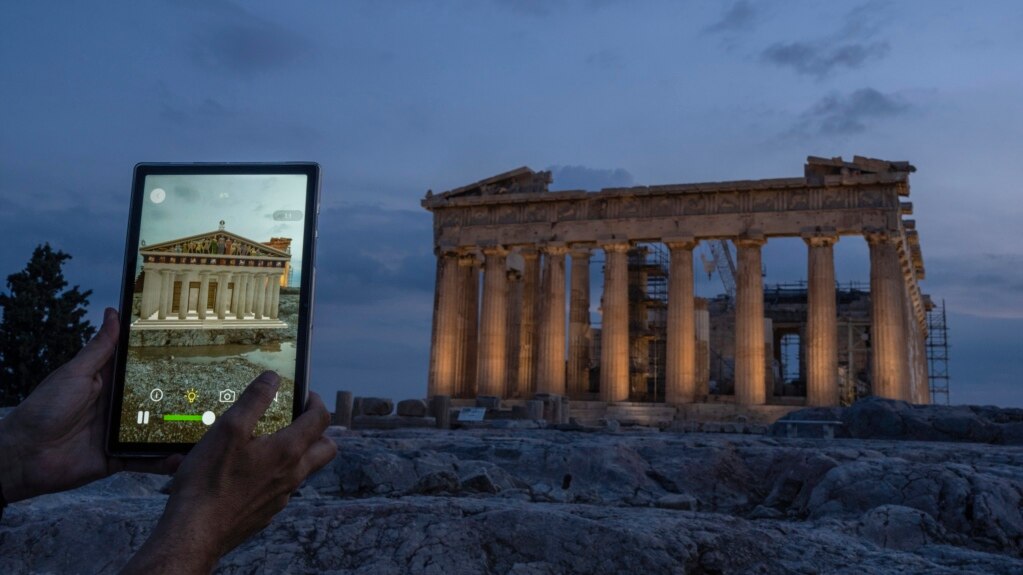If you visit the Acropolis in Athens, Greece, you will see the rocky grounds high above the city that include the famous ruins of the Parthenon.
However, if you use a new app from Greece’s culture ministry, you can see what the building and grounds looked like more than 2,000 years ago.
The app lets visitors see the famous place in its true glory, with the bright colors and details it had in the past. Archaeologists and other historians worked to create digital images showing how the Acropolis looked when it was new.
In the app, the Parthenon, for example, has its famous marble sculptures that are now at the British Museum in London. The app lets visitors see the sculptures where they used to be near the Parthenon. Greece wants Britain to return the sculptures.
Experts say the app, called Chronos, is an example of how Artificial intelligence, or AI, technology is being used to tell the stories of the past.
The technology that expands what people can see is called augmented reality or AR. Companies such as Meta and Apple are making big investments in apps and hardware that can bring the technology to more people.
Maria Engberg recently wrote a book about the subject. She said most people will first experience augmented reality through their phones at places like the Acropolis.
She said travelers will see the technology when they take tours. They will be able to see photos and videos as they walk around historic places. Engberg is a professor at Malmo University in Sweden.
“I think we will see really interesting customer experiences in the next few years as more content from museums and archives becomes digitized,” she said.
The government and other groups are making investments in AR as more visitors come to Greece following the end of the COVID-19 pandemic. Visitors to Greece in the first half of 2023 increased by over 20 percent compared to 2022, bringing over $10 billion to the Greek economy.
Microsoft worked with the Greek culture ministry to create a digital tour of Olympia, the home of the first Olympic Games. Lina Mendoni leads the agency. Earlier this year, she said the new technology lets “real visitors and virtual visitors anywhere around the world share historical knowledge.”
Cosmote is the Greek telecommunications company that worked on the Chronos app. Panayiotis Gabrielides of Cosmote said advanced smart phones and faster communications networks will permit visitors to “download even higher-quality content.” He said more guides and features will be available soon.
But for now, visitors can use Chronos to see how the Parthenon and other parts of the Acropolis once looked.
I’m Dan Friedell.

